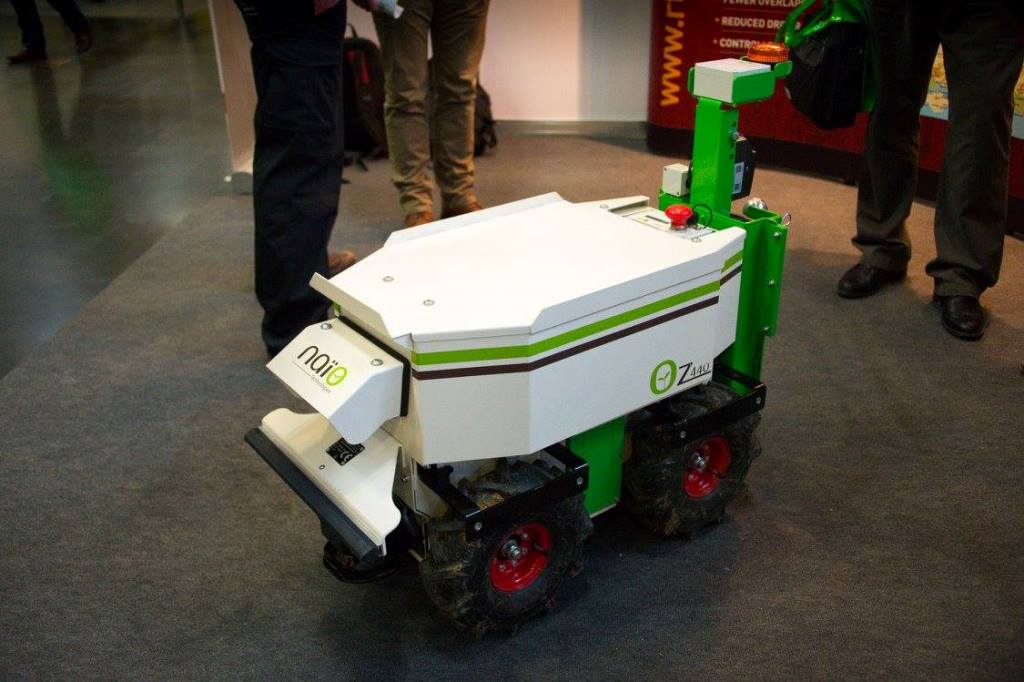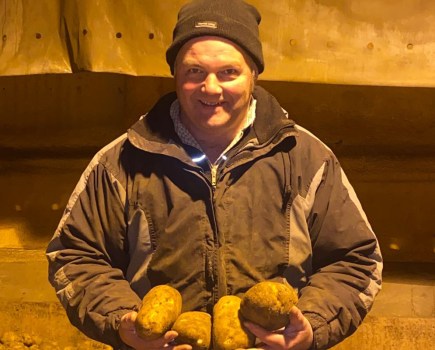‘Guru’ is probably an over-used and over-hyped word especially if you are like me, not flexible enough for yoga. I wouldn’t even dare to put ‘downward dog’ into an internet search engine let alone attempt the position myself.
But if I had a guru in mind for my farming universe then it would be Professor Simon Blackmore. If you’ve never heard him speak then I’d highly recommend him. He is one of those speakers that makes you come away thinking you’ve had a glimpse into the future. Simon is the head of Robotic Agriculture at that excellent place Harper Adams University.
Given the considerable technical progress we’ve seen over the past ten years, some of us might anticipate increasing tractor robotics. I’m sure I’m not the only one who thinks that in ten or twenty years’ time, I’ll drive the tractor to the field then programme it to do the job required without the need to touch the steering wheel again.
But intriguingly this isn’t Professor Blackmore’s vision of the future at all. For him the conventional tractor should soon be viewed as a technical dinosaur – a lumbering beast whose days are numbered. He points out tractors spend a good deal of their time undoing the soil compaction they cause in the first place. His solution is smaller robot machines working in fields as teams, seeding, spraying, fertilising and harvesting.
It’s a challenging vision for someone like me who’s spent his whole life watching tractors get bigger and bigger. The professor’s vision is a return to units smaller and lighter than the little grey Fergie, complete with LGP tracks so compaction is kept to a minimum.
But as a curmudgeonly old-school tractor man I wonder if it really is curtains for the thing in which I’ve spent a good deal of my farming life. For starters, there’s work rates – take drilling wheat for instance. Most of us seem to have arable systems that mean we need to be able to drill at least 10ha/day with some of us doing multiples of that. The question is how many smaller robots would you need to match that and at what price? The next question is supplying the seed. 10ha of wheat seed is at the minimum going to weigh a tonne so. Either these light-duty drilling robots are going to scuttle back for endless recharges or they’re going to start getting heavy.

Could robots, such as this one seen wandering around at CropTec, really replace a tractor that drills 10ha/day?
My other concern is even more low brow, not to say very Essex, and that’s the issue of security. Who’s to stop the ne’er-do-wells among us or the over-curious interfering in these robots that plod around fields without the need for a driver? Especially if, to make up for their small size, they’re working through the night. One fears they may be stolen from the field, especially if they’re small enough to get in a white van.
But maybe I’m being a little unimaginative here and these risks can be mitigated against through trackers and remote supervision. Even so, I still have the vision of someone in a pub nudging me in the back one day soon with a low growl “I’ve got a couple of robots out the back if you’re interested.”
Aside from improving soil health with light weight automata, another of the professor’s ideas is to improve the efficiency of pesticide usage. He rightly deplores the fact that many of us spray agrochemicals in the knowledge that with some applications, particularly herbicides, less than 1% are actually hitting the targets. It’s tantamount to trying to paint a skirting board in the kitchen with a high-pressure firehose, with most the paint ending up on the ceiling if not disappearing down the sink.
Hopefully camera technology will soon mean we only apply pesticide to the target weed. Not only will this be more efficient, it will also be environmentally more benign. In a world where politicians seem to like to ban crop protection materials quicker than they put their hand on someone’s knee, hopefully a reduction of 99% chemical usage might avert future prohibition.
But in my over-febrile mind this raises another conundrum. When pesticide manufacturers price agrochemicals for sale to the farmer, no doubt there are two drivers. Firstly, the cost of producing the chemical and secondly the value of the benefit to the farmer from the application of the chemical. If we see the introduction of application technology that can reduce pesticide use by 99% then there’s going to be a marketing problem, especially if some of us are still using the old wasteful ‘plaster the lot’ flat fans at 50cm settings.
But having written all that, I’m sure if it was left to antediluvians like me, who can only see the problems that changes could bring, then we’d still be perfecting the wheel. And that’s why we need people like Professor Simon Blackmore.
Guy Smith grows 500ha of combinable crops on the north east Essex coast. @EssexPeasant




